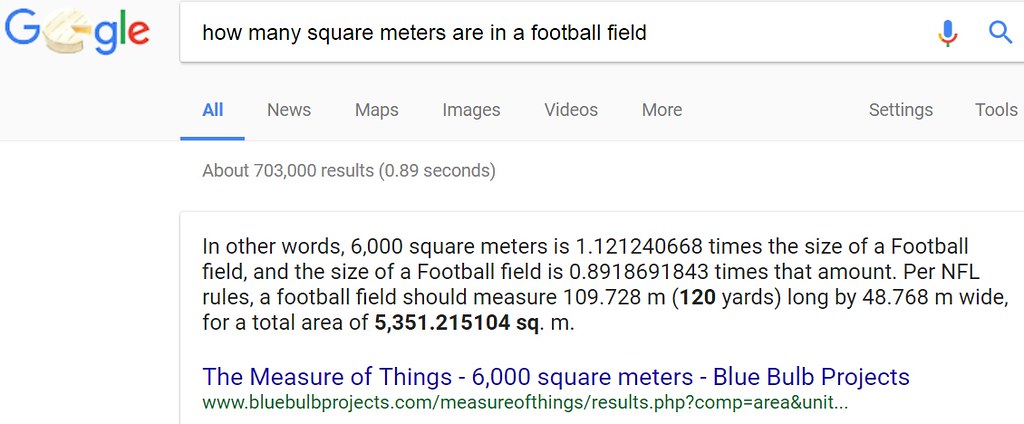The rate of deforestation of 1,000 football fields an hour caught my eye -- which led me to read the statistic in context. In the article from the 'Los Angeles Times' titled "Status of forests is 'dire' as world marks 2017 Earth Day" I found the rate (as mentioned above in the tweet) in the following context:
Since 1990 the world has lost the equivalent of 1,000 football fields of forests every hour, according to World Bank development indicators from last year. That’s 1.3 million square kilometers of forest, an area larger than South Africa, according to the international financial institution.
First of all, I really had trouble envisioning the area of 1,000 football fields at a rate of every hour for the last 26 years. The remainder of the article is insightful into the damage that consumerism had wreaked upon the world over time. Rarely do we get a chance to consider the large destruction of forests over a large period of time.
Over the last week, the statistic has been brewing in my mind. I had the urge to perform some dimensional analysis to confirm the reported statistic -- which is stated in question form shown below:
How many square kilometers of trees would be deforested at a rate of 1,000 football fields an hour?
In the paragraphs below, I show how to answer the question by using dimensional analysis. Enjoy!
How Large Is A Football Field?
In order to tackle the question at hand (stated above), the first value that must be obtained is the dimension of a conventional football field. To start, I typed into a search engine the following statement: How many square meters are in a football field? Which yielded the following answer shown below:
There are 5,351 square meters in a football field. Now we can rewrite the dimensions of a football field in 'square meters' as shown below:
From this determination, the rate of deforestation can now be written in a different form -- in units of 'square meters' instead of units of '1,000 football fields per hour:
Now, the total amount of deforestation per hour is expressed in units of square meters/hour rather than 10,000 football fields/hour. The purpose of converting units to square meters from football fields is important since the original question that we set out to answer is in units of 'square kilometers'.
There are two more major steps to get to a final answer of total number of square kilometers of trees deforested in the last 26 years. The above rate was for one hour of cutting trees down. In the excerpt taken from the article, the statistic was for 26 years worth of tree cutting at a rate of 10,000 football fields per hour. Taking the rate above and converting the denominator from 'units' of 'hours' to units of 'years' will get us to the multiplication factor.
In the conversion below, I show that the rate is converted to square meters per year -- which is then multiplied by 26 years to arrive at a total number of 'square meters' of trees removed from the Earth:
In a time period of 26 years, there were 12,000-billion square meters worth of trees deforested. Since the answer in the article is expressed in 'units' of 'square kilometers' the last step is the final conversion to 'units' of 'square kilometers' as shown below:
The final answer is 1.2 million square kilometers.
Conclusion...
In the post above, the statistic of 1.3 million square kilometers worth of trees was calculated from the time interval given along with the rate of 10,000 football fields per hour. Now, at this moment you might be thinking the following question:
The article cites 1.3 million square kilometers where as the result of the calculation above gave 1.2 million square kilometers -- why the difference?
I will leave that up to you. Hint: how big does a football field have to be to yield the final answer of 1.3 million square kilometers? Or stated differently, in order to gain 100,000 square kilometers, how much larger would the football field be?
I will probably go back and read the report to find out the assumption (the size of the report's authors assumed football field size) used by the authors. Regardless, now, you are equipped to answer equivalent questions using dimensional analysis.
Until next time, have a great day.






No comments:
Post a Comment